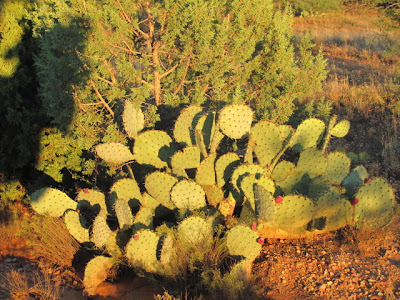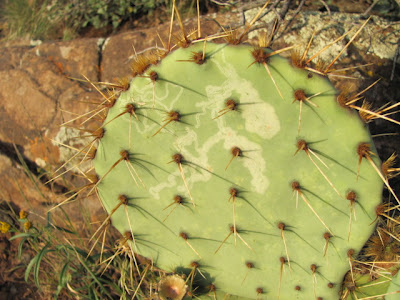In addition to the saguaro, prickly pear must be one of the most recognizable American cacti. This species is most like Opuntia engelmannii. It's an invasive weed in Australia, South Africa and other regions that match the climate of the Sonoran Desert, as are many other species in this genus.
I've seen this plant in Barcelona and New Jersey - both locations that are just not 'right' for the prickly pear. But here, in the desert, it was a pleasure to observe. The large, ping-pong paddle-like leaves are covered in long spines and in the spring, the plant has very large yellow flowers. I was sorry to miss the floral display, but thrilled to see this plant in fruit.
We took an off-road jeep tour at sunset in Sedona - in the photo above our guide is harvesting a prickly pear for our sampling. Even though the fruit appears to be spineless, it's actually covered in very small spines. Grabbing this without the protection of gloves or a piece of paper would mean you'd be picking spines out of your fingers all day.
Once you have a prickly pear in your hand, you can use a knife to cut away the skin, then scoop our the deep red, beet-colored flesh. I wasn't sure what to expect but was surprised at how delicious the fruit is. It's tangy and sweet, reminiscent of a plum, though it does have a grit to it from the seeds.
The fruit, which is commonly called 'tunas,' is used to make jams and, appropriately enough, to flavor margaritas.
There are many species of Opuntia in the American Southwest. The region I was visiting is most populated with O. engelmannii, but there is also O. phaeacantha var. discata (tulip prickly pear) and O. basilaris (beavertail prickly pear), which is spineless.
Opuntia is named for Opus, an ancient Greek city where cactus-like plants grow.







where did you go on your off road trip?
ReplyDelete